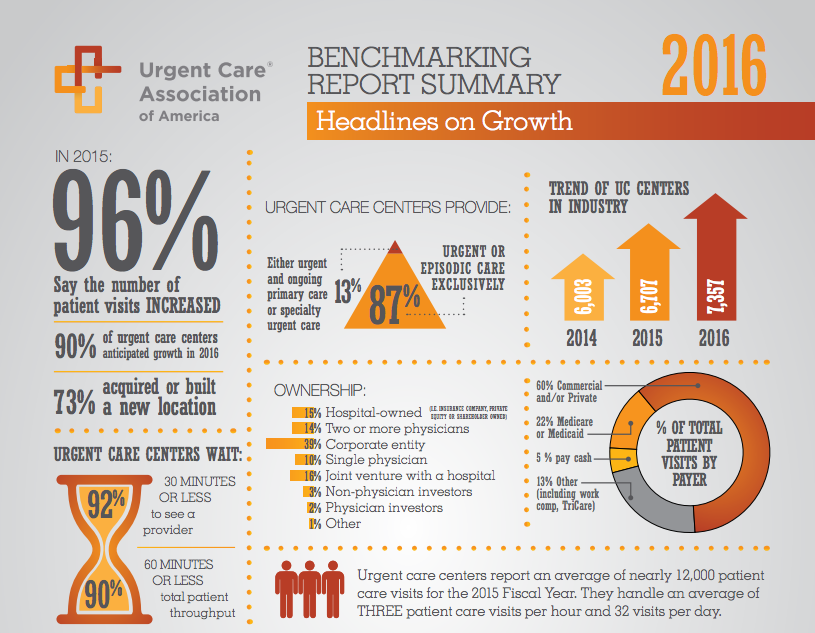Urgent Care Association of America releases 2016 benchmark report: 96% increase in visits; expanding services


Partial view of the 2016 Benchmarking Headlines. (Source the Urgent Care Association of America)
The Urgent Care Association of America has released its 2016 Benchmarking Report with stats about this growing segment of the healthcare market. The graphic above is only part of the fact sheet. You can click to see the full PDF of the benchmark headlines. You also can click to purchase the comprehensive benchmarking report.
The vast majority of urgent care centers across the country met demands of an increased patient load and kept wait times very low in 2015, according to the annual Benchmarking Report from UCAOA. The report shows that 96 percent of centers saw more patients in 2015 than 2014, and 92 percent kept wait times to 30 minutes or less. The total number of urgent care centers in the U.S. jumped to 7,357 in 2016, which is a 10 percent increase over 2015.
“The number of urgent care centers continues to increase, and patient visits at each center are climbing, as patients seek out convenient and affordable options for their on-demand healthcare needs,” said Steve Sellars, president of UCAOA board of directors. “Nine out of 10 centers expect continued growth, and many are broadening their scope of services beyond the x-rays and strep tests they are known for, to provide patients with an increasing array of treatment options.”
The study showed that many urgent care centers now offer healthcare services such as physical therapy, travel medicine, telemedicine, in-house pharmaceutical dispensing and concussion screening. In addition, others are also extending their reach into their communities through flu immunization clinics, employer-based worksite services and health fairs.
The study validated the value of urgent care centers in caring for acute episodic illnesses and injuries. According to the survey, the most common diagnoses at urgent care centers in 2015 were acute upper respiratory infection, acute sinusitis, acute pharyngitis, cough and acute bronchitis. 85 percent of surveyed centers also reported that they have implemented mechanisms to secure a primary care physician for presenting patients who are not yet affiliated with one.
“Coordinated patient care is becoming more essential in order to best care for patients, and the report illustrates that the industry is responding. At the same time, patients truly understand that urgent care serves a vital role in the healthcare mix, and know how to best utilize it to keep themselves and their families healthy,” said Sellars.
